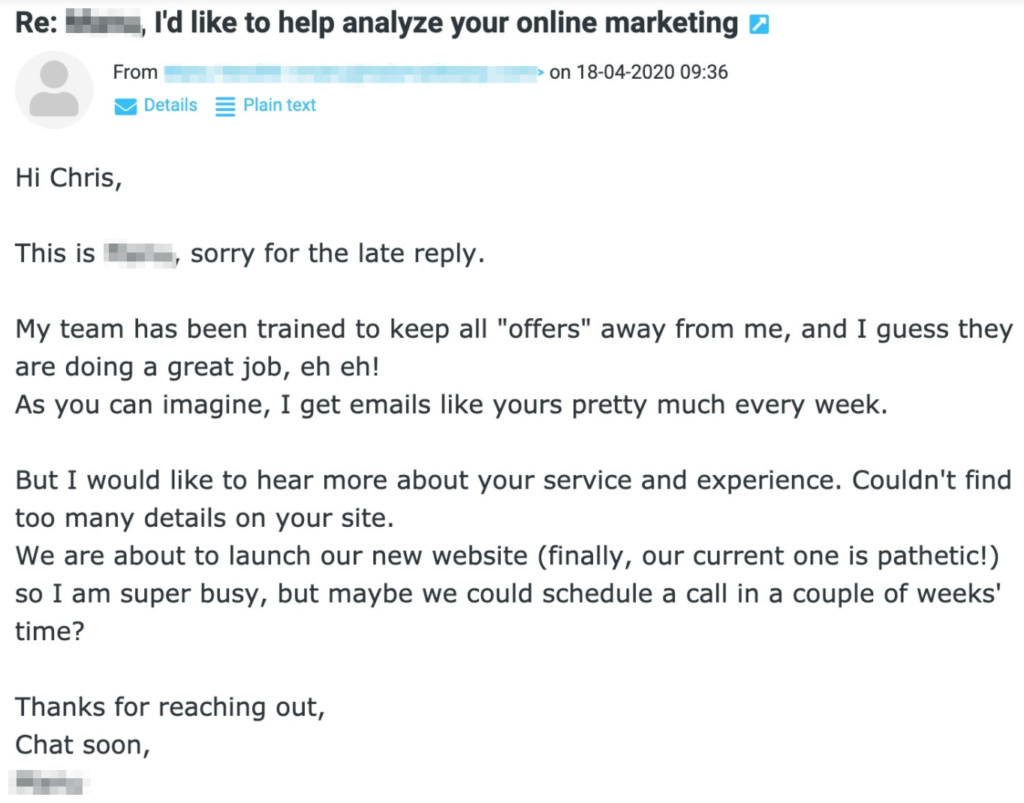In this article, I’m discussing if freelancing on the side is the best approach to earning money while at your day job, so you can eventually quit if you want. If you are looking for a guide on how to do it, go here instead.
Over the past years, I’ve been experimenting with different online businesses to understand which one is the best fit for me based on personality, skillset, and interests.
There are many popular online business types out there, so it’s worth comparing them to freelancing if you want to earn money on the side.
I made the mistake of not figuring this out upfront and that could have cut a few years off of my learning curve as I realized there were better business models for what I was trying to achieve. Don’t make the same mistake as I did.
Analysis of the most popular online business types for earning money on the side
We’ll be looking at the different online business options through the following lenses:
- Key tasks: what the key tasks are and what it looks like day-to-day, so you can get a better understanding of if you like that type of work
- Timeline to results: how long it will take before you can expect to see a return. As a rule of thumb, the business models that allow you to earn money faster is often a tradeoff between speed and scale
- Budget and resources: so you’ll get an idea of how much to invest upfront (if any)
- Results and scale: so you’ll know which type of online business fits you better depending on your short- and long-term dreams
- Introvert or extrovert, so you’ll get a better understanding of how much you have to be working as a lone wolf vs. working with people, so you can avoid something you hate
Within these areas, we’ll look at the following popular online business models:
- Freelancing
- Building SAAS apps or software
- Creating info products or coaching
- Sell ads or earn affiliate commissions
- Getting Patreon or Kickstarter backers
There are many other business models online such as flipping things on eBay, flipping websites, and traffic arbitrage (buying and selling online traffic).
I have not included these as they are either not fully online, require unethical tactics, or are simply unnecessarily challenging to get started if you want to earn money on the side while working at your day job.
The summary
Freelancing and consulting
Freelancing is the first online business model that comes to mind. As you might know, it’s pretty straightforward. You simply need to help someone solve a problem and get paid for it.
The key tasks are finding leads, understanding their needs, pitching them, and helping them with the projects they pay you for.
In the simplest example, you email a business, agree on the work, complete the tasks, and get paid. That also means the timeline to getting paid can be short.
Of course, it’ll vary project by project but often this is the fastest way to start earning money on the side when you have a full-time job.
With an online freelancing business, you only need your laptop, internet, and the skill you’d like to help people with. It is a low risk-business as you don’t need to spend any money or have any setup in place to start earning money.
This will most likely be the easiest and quickest (not to mistake for easy) way to earn your first $1,000 on the side while having a day job.
For many freelancers, it is possible to replace a good full-time salary with freelancing.
If you don’t have any experience working online, this is the best place to begin for most people wanting to earn money on the side as you often use the skills you’ve learned at your job, repackage it, and sell it to other businesses.
Building SAAS apps or software
This category is about earning money building and selling digital software. Most often it comes as mobile or desktop apps and a popular way of earning money are selling software as a service (SAAS) where someone pays a monthly fee for using the app.
A good example of this is the Clozemaster app. It is a game you can play to practice remember words if you are learning a foreign language.
The key tasks going into a project like this is building or buying the software you are going to sell, maintaining it by fixing bugs and adding new features, and getting new customers.
I have it from valid sources that the part about maintaining and updating software is what people often underestimate when they take on a project like this.
Unless you are buying a project that already has users and customers, you’ll probably want to spend most of your time getting customers to get feedback on your project.
If you at the same time have to build the product or hire someone to build it, you’ll be spending a lot of time – or money if you decide to outsource it instead.
That means the timeline to having an online side business that can support your lifestyle takes much longer than with some of the other examples. I would imagine you are looking at several years if you’ve never done it before.
As the cost is higher than in our first example, the risk is also higher. On the contrary, the potential for earning more money is also better. While it certainly takes longer to get off the ground, the upside can be in the millions of dollars as these types of projects are more scalable than, say, freelancing.
Some people like this model because it allows them to be a fully lone wolf only working with a few freelancers at best.
Creating info products or coaching
I’ve decided to group online coaching and info products together because they often overlap.
Often you will be doing the same, or similar work when helping clients. The major difference is whether that is automated via e.g. a video product that sells cheaper and has slightly more mass appeal.
Compare that to coaching where you often have client calls and are present during the training while also charging a higher fee.
Often you’ll see people using the same platform and sometimes you’ll even see them selling both an info product and a premium coaching package. Usually, they have a website where they have attracted an audience and now are selling either of the two options.
You can expect to spend most of your time creating content. As you build an audience, you’ll want to build a product or service and learn how to sell that.
The timeline to earning a meaningful amount of money will likely be a couple of years if you haven’t done it before.
It doesn’t cost much except your time so the risk is lower and it can be a stable business with high retention.
The upside is huge, just look at blogs like Ramit Sethi’s website earning $5 million dollars in a week (and don’t forget the fact that that was 10+ years after starting).
Whether you feel more like coaching one-on-one or creating products, with this type of business you can select how much you want to involve other people. You could hire contractors or a team to help you create content or build products but you don’t need to at all.
Sell ads or earn affiliate commissions
I’ll keep this section short as the process is the same as you’ve seen above. You’ll build an audience by creating content and with this type of business, you can either earn money by showing ads or earn a commission if someone buys something.
Many people like this option because it is a great fit if you are introverted or don’t want to work with other people. If that’s you, this will probably be a good business model to pursue.
It is a trade-off as you in many cases will earn more by creating online products but with some industries, that simply won’t work because the market doesn’t have enough money or they don’t want to pay for that type of solution.
In that case, you might sell ads or earn affiliate commissions instead.
In this scenario, you’ll start earning money as soon as you get visitors but it won’t be much, and it’ll probably take years before you start seeing any amount of money that will be meaningful for you.
Adding the ad units to your website is easy, and so is placing the affiliate links on your website. You will definitely be spending most of your time creating content and promoting it.
I don’t see much risk in this business model except your time.
Getting Patreon or Kickstarter backers
The final business model is using Patreon or Kickstarter to get “backers” that pay a fee to support you. Your audience ‘donates’ or supports your project with a single number or a recurring payment monthly.
Contrary to what many people believe, these platforms do not give you an audience. In most cases, as with many of the other options, you’ll have to spend most of your time creating content and building an audience.
To monetize you’ll have to create a product and different tiers of products depending on how much money your contributors want to give you.
Just like with many of the option business models, the timeline you are looking at to making any meaningful money is quite long.
The risk is low as you can spend your time creating the content so it won’t cost you much to get started.
I like this type of business because you can make certain topics profitable that wouldn’t generally be with other business models.
An example I haven’t seen work well with other business models is content related to maps and fans of geography.
I haven’t built a business like this before but my impression is that you’ll have to be comfortable being on camera, so it’ll not be a good fit if you are introverted I imagine.
Which type of business is best for you to earn money on the side?
Now the big question is which one suits you better? I’ve found that freelancing is the best option to start with because you can earn your first money online quickly.
That’ll help keep you motivated and build momentum which is one of the most important things if you want to turn your online business into something that can help you quit your job.
What’s the best way to do freelancing on the side?
There is plenty of misleading advice out there about what it requires to land freelance clients: create posts on Facebook, Twitter, Instagram, TikTok, go to networking events and do free work to get exposure. All at the same time.
Those are the things that’ll make sure you won’t get anywhere. Instead, there are two challenges you’ll face that will make the difference: if you can create time to work on your freelance business and if you can overcome the fact that clients will not come to you at first. You’ll have to find them.
Let’s start with the first one: creating time for it.
You might start with 5 hours per week and work your way up to 20h/week eventually. This will feel hard at first but you’ll get used to it quickly while still having time for other things.
If you are looking to quit your job one day, this will serve as a safety net. You’ll first have to validate your freelance business idea, so you know that it works when you pull the plug on your job. That way you won’t be screwed and have to come crawling back to them later.
Doing these extra hours first will make it easier when you quit because you are used to working harder.
The best way to validate if your freelance business will work is by setting a goal of e.g. three paying clients in three months.
That way you know that there is something there and if you can find three paying clients for your idea, you can find more!
You’ll also need at least six months of savings to keep you going because you’ll never know when another recession is coming or a disease like Corona.
You don’t need to worry about a professionally sounding email address, website or business cards. Those are all distractions that you can think of later. For now, your Gmail, Hotmail, or whatever you have will do just fine.
When you begin, it’s easy to get lost in the trenches so a great way to beat that is to create a mini schedule with the tasks you have to do each day.
For example, every morning spending one hour on contacting a new business that might need your help.
It’s simple, easy to remember and most importantly that is the only task that will directly help you earn more money. At this stage the rest are things that will help you procrastinate.
Let’s move on to the second point.
The one question you have to ask yourself
So many people are freaked out about having to sell themselves and their services. It’s usually because we aren’t good at it.
When I started I was terrible and I didn’t like it. It was scary, I was nervous on phone calls because I was afraid clients might ask something I couldn’t answer.
I hated following up with them because I felt like I was annoying them thinking that they would have answered already of they were interested.
As it turns out I was dead wrong. I’ve gotten plenty of emails with people thanking me for checking in because they got busy and we have later worked together.
I have also gotten lots of emails of people thanking me for reaching out cold.

Looking back I didn’t enjoy it because I wasn’t good at it. I still have a lot to learn but I’ve come a long way and I enjoy the process now. I’ve learned that it can be done in a nice, fun, and authentic way that people actually appreciate. It’s incredible.
You don’t have to be a master salesman or even like it but you have to be comfortable with the idea that you’ll have to take the first step and reach out to businesses to let them know you exist.
Takeaways
- Freelancing on the side is the quickest and simplest way to earn money remotely but it still requires hard work. It is a great approach to be able to afford to quit your job before building something you can live off of for the rest of your life
- There is no way around that freelancing requires us to do sales but it doesn’t have to be done in a salesy way or be inauthentic.
Other links





I really wanted to do something else on the side
What do you have in mind, Shanique?
Very insightful as always – Chris.
How do you go about cold emailing, how do you get to figure out just maybe this company needs my services.
Plus there’s something I’d like to discuss, maybe I’d push an email across.
Very educative article, great job.
Thank you.
Hey Tavers, thanks for saying that. This link should take you directly to the article where I shared my approach. It’s for freelance digital marketing but the approach can be replicated for other services too